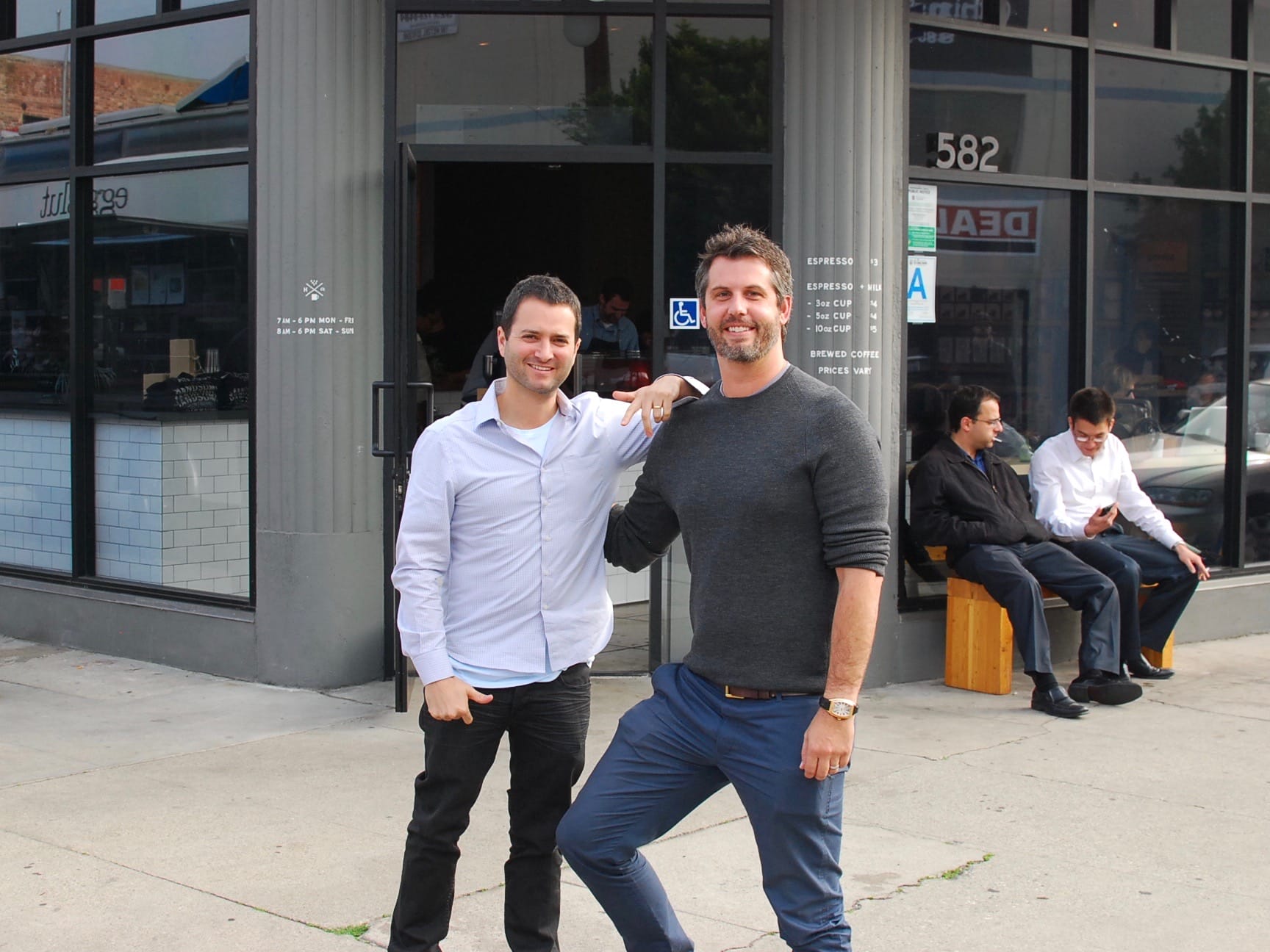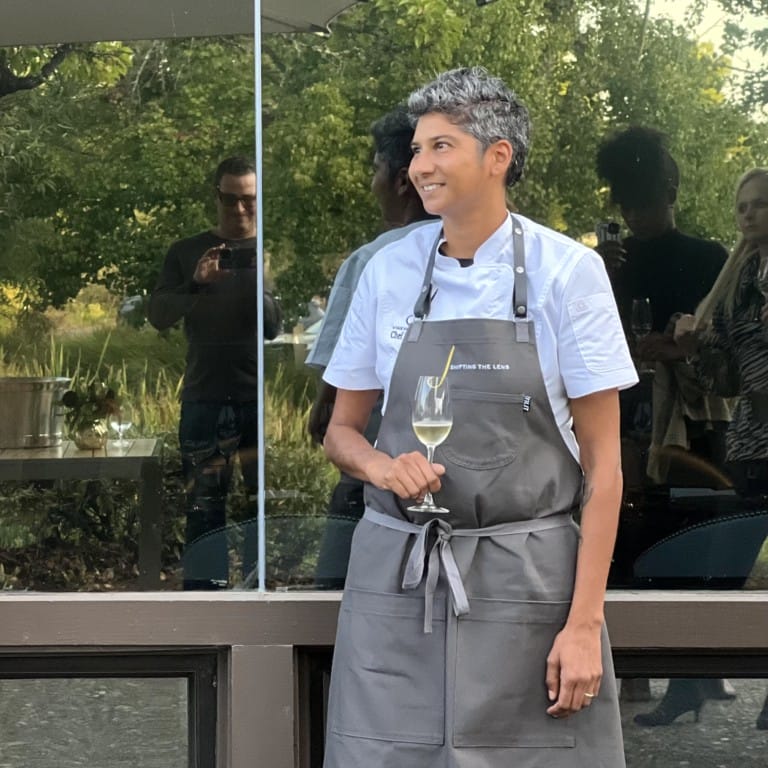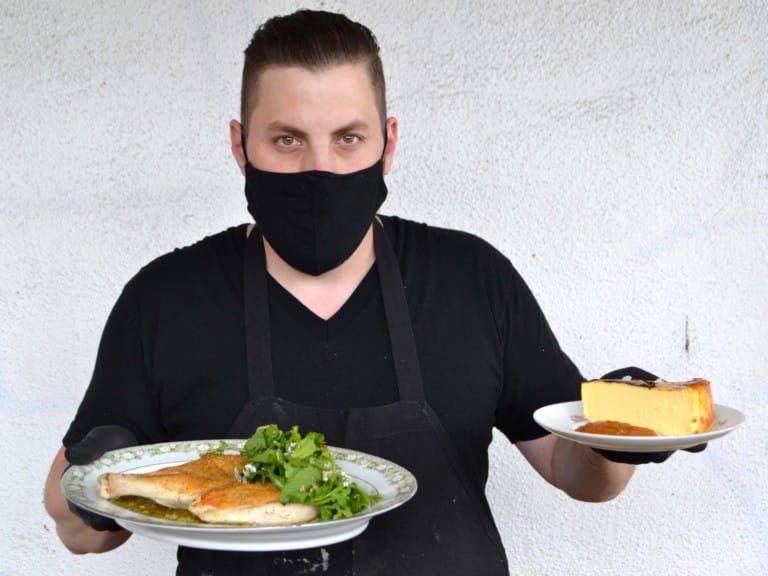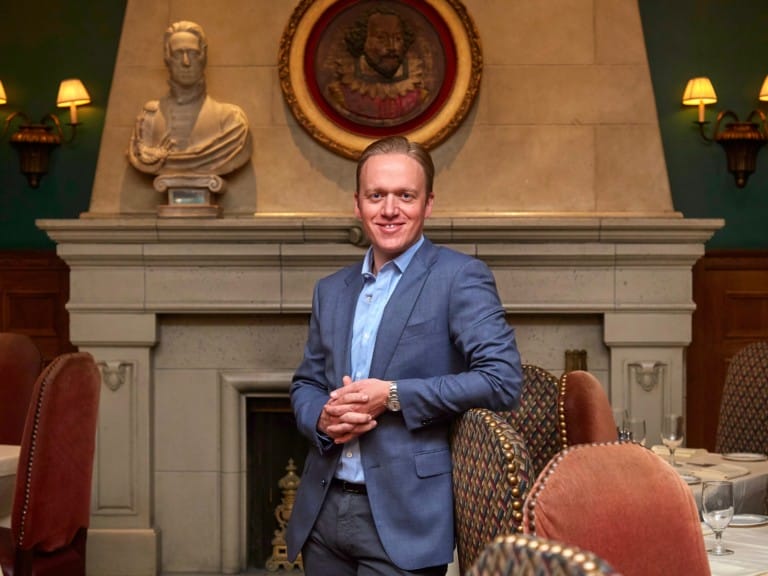Tyler Stonebreaker and Michael Smith met as teenagers on the California tennis circuit and are now business partners in Creative Space, a Los Angeles company that fills unique workspace needs by combining real estate, architecture, design, business and permitting expertise. Stonebreaker is a Newport Beach native with degrees in Business and Civil Engineering from USC and a real estate background. Smith was born in Michigan, raised in Santa Barbara, and brings marketing savvy to the business, along with Communications and Economics degrees from Northwestern. Creative Space originally addressed entertainment and manufacturing needs, and their work for Handsome Coffee Roasters opened specialty coffee doors. Now they’re helping Portland-based Stumptown Coffee Roasters open a roastery/café in L.A.’s Arts District and North Carolina-based Counter Culture Coffee expand to San Francisco. They’ve also helped place “makers” like Heath Ceramics in San Francisco and restaurants like Laguna Beach-based Zinc in L.A.’s Arts District while working with seemingly disparate businesses like rock climbing studios and artist spaces that all help round out the types of robust neighborhoods they have in mind. On February 5, I met Stonebreaker and Smith at Handsome and they better explained their holistic approach.
Josh Lurie: How did you originally team up?
Michael Smith: We’ve known each other since we were 14 years old. Basically, Tyler went off in the direction of doing real estate, and covering that from all different angles of development, acquisition. It eventually evolved into what Creative Space is now, which is basically translating real estate for the creative class and helping the top, game-changing creative businesses with different real estate solutions and space needs. I came from a creative background. I’ve done some different media companies, in music and publishing. Tyler and I basically crossed paths professionally when he was thinking about, as a creative entrepreneur, how I saw things and the world, through space, and what my space needs were…As we started to work more and more together, and I was advising him on the creative world, I really loved what he was doing, and how basically, when I looked at how he was putting in places like Handsome and Urban Radish…Real estate was incredibly creative in and of itself. I had thought of, in the past, as being more of a boring suit and tie game. It’s very interesting, very amazing, what he’s doing from a creative standpoint. We linked up a couple years ago and really refined what Creative Space is.
Josh Lurie: What does a client have to be for you to work with them?
Tyler Stonebreaker: I always felt that the marketplace did a pretty decent job or serving what is otherwise the black box for traditional companies, utilizing space for 20th Century uses. Office, retail and production space are sort of the primary categories of commercial. What I didn’t think the traditional real estate community was doing a good job of, was understanding what I felt was this shift in marketplace. What people refer to as the “new economy.” It’s not necessarily a new economy, because this already goes back to the ideals of the Renaissance era, where it was about bringing different types of thinkers together to solve the problems of that day. We’re doing the same thing now.
There are several pieces of research that we refer to. One is this idea of shifting from a knowledge age to a cultural age. That’s Daniel Pink, who is the author of a book called “A Whole New Mind.” There’s also a series of research by Richard Florida, who has written about the creative class. Recently, we have seen these mutations of the “makers” movement and the craft food world, which sort of fits under the “makers” to some extent. All of these different things are a response to a shift in society. I didn’t think that the real estate community was properly set up – the mindset wasn’t there, the tools weren’t there – to be able to service this new mindset, this new way of thinking, this new way of approaching the world. So the company was really built around that disconnect, and solving that disconnect. We refer to a lot of the things we do as bridging, bridging the creative gap between the real estate world, creating pathways for businesses at a technical level, to be able to be intelligent about how they grow their business in a very uncertain world.
Josh Lurie: Who was your first client with Creative Space?
Tyler Stonebreaker: It was a furniture company. It’s called 9 to 5 Seating. They had been in business locally. They had to shift a lot of their business overseas during the 90s, and in 2008, 2009, they decided it was time to challenge that movement and bring manufacturing – at least a portion of it – back. They hired us to help us rethink their business operation locally, and we created a 100,000 square foot corporate headquarters, which was corporate offices, showroom, manufacturing and distribution. I just got an e-mail last night from Los Angeles Business Journal. It was nominated as the top corporate headquarters project of 2012, even though it was technically 2011.
Josh Lurie: What are the elements that you worked on with that project?
Tyler Stonebreaker: That was everything from looking at different scenarios for that headquarters, whether that was acquiring an existing building, repurposing it, buying land and building from ground-up new construction. What we ultimately decided on was studying different land sites. We selected one in Hawthorne, which in its own right, doesn’t sound very interesting. What happened was, it was a piece of property along the Hawthorne Airport. Space X was there, which is owned by Elon Musk. Tesla was there, but it wasn’t known at the time. Now Tesla and Space X have taken over this whole campus, except for 9 to 5 Seating, our client. They’re right in the middle of it, and it’s become – we called it “where the future’s being built today” – because all of these different ideas about how to solve problems going forward – be that space exploration or the environmental issues related to automobile, and coming up with new technology. It became this really dynamic campus. Once we selected that location, we worked with that client to procure a loan from Bank of America – it was the largest loan at the time that Bank of America was doing in the country for entrepreneurial SPA financing – we brought in the design team, the construction team, we managed the approval process, and also the financing, and delivered it turnkey, all the way into move-in. We even worked with them on what they refer to as “change management,” getting their employees used to this new operating system and this new environment.
Michael Smith: If you’re a creative business, there are all of these different parts of the process that have traditionally been silo’d for you. You need to go and figure out who to use for each different part of that process. What Creative Space has done is made that turnkey. Let’s say you’re a creative entrepreneur with a really quickly growing business. You don’t necessarily have time to not only figure out 1) What are my real space needs? Not just type into a calculator how many square feet I need based on how many employees I have; what are the hours of the day my people are working? Are they remote? Are they coming in? Helping them think through the problems of what they actually need, then helping them find options and the type of communities they want to be in, the type of amenities that they want to have around them, and really factoring that in. So helping them identify and find those spaces, helping them within that framework. We have an architect on our team, so how to plan out that space in accordance with what their needs are.
Josh Lurie: How did you become the go-to source for coffee roasting company strategy?
Tyler Stonebreaker: There’s a lot of movement and adaptation, so we built our company to adapt, rather than the other way around. When Handsome first happened, we were in Hollywood, and Handsome was down here, before they even formed, calling all the real estate agents, and they wouldn’t call them back. They finally got so frustrated that they went to Hollywood, which was their back-up neighborhood. A broker called them back and told them where they should go, and they entered into negotiations on a lease and were ready to sign, and a broker recommended an expediter to navigate approval. He called and said, “You can do roasting and retail, no problem.” Tyler Wells, who opened up an Intelligentsia location and knows a thing or two about opening a coffee store, he went to down to City just to verify himself and there was a cue on that zone that did not allow roasting.
That day, at 3 o’clock, we got a call from Tyler. He said, “We’ve been calling everyone. We’re frantic. We just were about to sign a lease.” We said, “We hear you. Come on down to our office.” He came down to our office and told us our criteria. They wanted 3000, 3500 square feet, corner location, storefront, bow and truss building, which is the architecture they were looking for, and 200 units of power, and, “We want to be in the Arts District.” The next morning, we came here.
Josh Lurie: How many spaces did you consider?
Tyler Stonebreaker: There was only one that was available that fit their criteria. And then the next step from there was understanding how they were going to be configuring the space. It was coincidental and serendipitous, if you will, this was a storefront built in 1947, and it was just covered with plywood, essentially.
Josh Lurie: So Handsome was your first hospitality client?
Tyler Stonebreaker: I guess you could say that.
Josh Lurie: What has working on [the Handsome] project allowed you to do?
Tyler Stonebreaker: We started our really focused on entertainment. 1) It’s the biggest creative industry. 2) It utilizes space in so many ways, and it just seemed like if somebody approaches it strategically, and created a process across all the different uses of space, off-lot, on-lot, short term production, post production, shooting, all the different facets, corporate offices for studios and production companies, all of those different things, if somebody figured that out and did it right, that would be a great business. Inadvertently, Handsome came into our little node, and we’d always thought it would be fun and important to connect to the retail setting, especially creative workplaces, young, innovative, progressive people. They tend to be interested in like-minded activities: food, culture, art. We always felt like there was a connectivity, we just didn’t have the experience yet, so Handsome opened up that door to us. What subsequently happened was we fell in love with the neighborhood here, we moved our offices down here, and because of our work here and providing Handsome with a pathway, in what was one of the fastest entitlements ever, in L.A. County Health and the City of L.A. – the start to finish was four-and-a-half months for a full roasting and retail facility.
Josh Lurie: Is the model in place now to have a similar experience for Stumptown and Counter Culture?
Tyler Stonebreaker: Yes, and we’ll do the same thing in San Francisco. We have an office in the Mission, so we’re working with breweries, coffee roasters, and restaurants up there, as well as more workplace production-oriented businesses. Up in San Francisco, we support SFMade, which is a non-profit centered around empowering local production and manufacturing industries, primarily around arts and crafts and artisanal production. So we are a real estate team to them and there are a lot of food handling and processes. We’re working with a company called Good Eggs, Inc. in San Francisco. They’re creating a technology framework for empowering local food movements around the world. We’re working with them on creating their first prototype production facility with their offices and helping them grow. The connective threads seem to be disjointed, but to us they make perfect sense. What I started out saying earlier is you have office, retail and production boxes. Well, what is [Handsome]? They have offices, they have distribution, production, roasting. They have retail. We work with a lot of makers companies. We work with Unique, Sonja Rasula, and what do you classify her as? Those types of illustrated examples, there are no longer these boundaries and borders around this. People want to infuse themselves into this lifestyle and culture and these types of neighborhoods. You have to be able to work non-linearly in how you think in order to understand this, but for us this makes perfect sense…
Michael Smith: To jump back, when you asked the question, what type of companies we work with, we work with people that are basically making the future, people like this that understand experiential retail, trends that are happening, people that are making those trends. That’s who we want to work with because a lot of them have unusual space needs and unusual ways that they run their businesses. For us, we get a lot of joy out of helping people make their dreams a reality. Most of them have trouble doing this sort of arrangement and pulling together all the different components. This is a critical part of the growth of this movement. Urban Radish, which is down the street, will be the first truly artisanal market to the Arts District. It’s a very important component of everyday living down here. So for us to be able to work with those types of businesses that are seeing and addressing these needs, we’re a co-work company. They want to use space in unorthodox ways and we have the team to help translate that vision and translate that to a real estate economy that isn’t suited to the ideas of our generation. This area has been cold storage, warehousing and heavy manufacturing, not artisanal coffee and technology businesses, 3-D printing companies and all the mish-mash of types of folks that we work with and that is that next generation of business. We’re that bridge between those worlds.
Josh Lurie: How do you loosely divide duties at Creative Space?






Leave a Comment